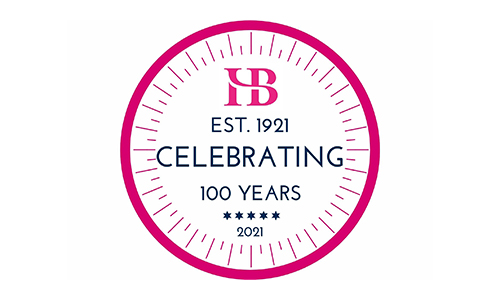Buoyed by the apparent success of rolling out IR35 into the public sector, HMRC have extended IR35 rules to the private sector with effect from April 2021. If you employ anyone through their limited company or via an agency then you will need to consider the new IR35 rules – read our guide to help you understand more.
IR35 – What does this mean for me & my business?
Firstly, if you only have direct employees, then don’t worry about IR35 right now. If you employ anyone through their limited company or via an agency, then checks are necessary.
The History of IR35 in the UK
IR35 – A clamp down in the public sector
I’m a private company employing workers via their limited company. What do I need to do right now?
Online help to check employment status from HMRC
Top Tip when assessing if IR35 applies to your workers
I’m a private company employing workers via their limited company. What do I need to do right now?
A “small” customer is one which satisfies at least two of the following three tests:
- Determine if you are a ‘small’ customer
A “small” customer is one which satisfies at least two of the following three tests:
- Annual turnover not more than £10.2 million;
- Balance sheet totals not more than £5.1 million;
- Monthly average number of employees not more than 50.
These tests are applied to the last financial year ending before the start of the tax year concerned.
If you are a small business – there is no further action.
If you are not ‘small’ then you need to decide if IR35 will apply by carrying out employment status tests on your PSC workers.
2. Determine whether a worker is employed or self-employed

It is your responsibility as the ‘customer’ to decide if the PSC is caught by the new rules. You must issue a Status Declaration Statement (SDS) which declares a worker’s deemed employment status following an IR35 assessment.
You are liable for any PAYE and NIC until the SDS is issued so it’s essential that you identify any areas where you could be at risk
Online help to check employment status from HMRC
HMRC expects you to take reasonable care in arriving at your decision. Help is available online through HMRC’s Check Employment Status for Tax (CEST), although many feel it is insufficiently detailed and it’s been known to provide erratic outcomes. But, provided that an honest attempt has been made, HMRC will accept this and will not seek retrospective action if the decision is reversed. Alternatively, you can make the decision yourself or ask a specialist organisation to carry out an independent review.
TOP TIP when assessing if IR35 applies to your workers
Whichever method you choose, save or print any reports provided in order to protect against subsequent action by HMRC.
Remember:
- The SDS must give the reasons for the decision
- It must be supplied to the worker. If an agency is involved, the SDS must also be supplied to the agency
- The worker or the agency may object to the decision but there is no right of appeal to HMRC
- In the event of an appeal, you have 45 days to reconsider their position
- You must reply to the worker (and the agency if appropriate) giving reasons for upholding the original decision or issue a revised SDS
What are the guidelines to determine who is employed or self-employed for IR35?
There is no legal definition of whether someone is an employee or self-employed. It is determined by looking at relevant factors and deciding on the balance of probabilities, guided by legal cases brought over the years. It is now generally recognised that the two important factors to take into account are control and personal service but there are others to consider.
1 – IR35 Control – Who controls the work – is it the customer or the worker?
- Find out by asking:
- What is the nature of the task?
- Where is the work carried out?
- When does the work have to be done?
- How is the task to be undertaken?
- Who determines how payment will be made?
If the work has to be carried out at the customer’s premises at a specific time, payment is made on the basis of hours worked and the individual is not allowed to work for any other organisation, then it will point strongly towards employment.
If the individual is paid an agreed fee for completing the task and can do so where and when they choose (within reasonable constraints), it will tend towards self-employment.
Bear in mind, for example, that if you call out a plumber to fix your tap, the customer will determine where and when the work is carried out, but the plumber will determine how the work is to be done. The plumber is clearly self-employed.
2 – IR35 Personal service – who is to carry out the task?
Establish who is to carry out the task. If you, as the customer, can insist upon a particular individual doing the work, then there is likely to be employment. If, on the other hand, the worker (or PSC) can send a suitably qualified substitute to do the work, it is likely to be self-employment.
Keep in mind:
- It is important that the substitute is paid by the PSC and not directly by the customer
- There is a stronger presumption of self-employment if the right of substitution has happened, but it can still be valid if the right simply exists
- The customer must not have undue influence over the right of substitution
3 – IR35 Mutuality of obligation – can/does your worker work for others?
Mutuality of obligation, and therefore employment, will exist when you, the customer, have an obligation to provide work for your worker, and they have an obligation to undertake it
If the worker can work for other customers, then it implies that there is no mutuality of obligation and it is likely that the worker is self-employed
Bear in mind – what starts as a casual arrangement can develop over a period of time into a regular relationship and, therefore, become a mutual situation
4 – IR35 Integration – how does the worker fit into your organisation
- Do they have a title (such as associate manager)?
- Are they on the customer’s internal staff listing for telephone and email?
- Do they have their own office space at the customer’s premises?
- Do they carry out work similar to that done by employees of the customer?
- Any affirmative answers would tend to indicate employment
5 – IR35 Economic reality
- Does the PSC have independent economic viability?
- Does it have its own premises and provide major items of equipment?
- Is there an inherent element of business risk involved and is there the prospect of making profits if the work is well done or incurring losses if the work needs to be redone at the expense of the PSC?
- Are there other customers?
What do I do if IR35 applies to my worker?
If you have established that IR35 applies to your worker, you (or the agency) will be responsible for operating PAYE and NIC as if the worker is your own employee.
They will issue an invoice to you (or agency) through their PSC. You (or agency) will remove VAT and any genuine charge for materials and “employment” expenses, then operate PAYE and NIC on the residual amount, accounting it in due course to HMRC. Then add back the materials, expenses and VAT and pay that amount to the PSC.
The History of IR35 in the UK
Let’s review the history of IR35 as it’s been around since the turn of this century. Prior to 2000, workers could pay themselves through a limited company, known as a personal service company (PSC) working directly for a business, known as the ‘customer’ or via an agency. This meant that the worker could avoid PAYE and national insurance contributions (NIC) and take their money by way of a dividend rather than as a salary. In 2000, IR35 was introduced to counter this.
The original plan was that the employer, the ‘customer’, would be liable for operating PAYE and NIC but large companies lobbied successfully to get the PSC (the worker via their limited company) to decide if the new rules applied to them. The question they had to answer was “if the PSC was removed, would you be an employee or self-employed?”
After checking the guidelines issued by HMRC, a significant number of PSCs realised that they were employees. Many either accepted that they would need to operate PAYE and NIC on their income or, as was most often the case, become direct employees.
Those PSCs who convinced themselves that they were outside of the legislation, carried on operating as if nothing had changed. Apart from a couple of attacks, HMRC seemed to accept that they had achieved sufficient success and matters continued largely unchanged.
IR35 – A clamp down in the public sector
From April 2017, however, HMRC introduced what had been their original plan of making the ‘final customer’ – a public sector body such as the NHS – liable to decide if the worker was employed or self-employed.
HB Accountants are here to help our clients if you have questions about IR35 or are concerned that your PSC workers may be caught within these rules – if you would like to get in touch with HB Accountants in Hoddesdon, email us at directors@hbaccountants.co.uk and come in for a coffee and a chat about how we can help you.
The information contained above is for general guidance purposes only. Whilst every effort has been made to ensure the contents are accurate, please note that each individual has different circumstances and it is essential that you seek appropriate professional advice before you act on any of the information contained herein. HB Accountants can accept no liability for any errors or omission or for any person acting on or refraining from acting on the information provided in the above

Visit our COVID19 Business Hub for more information
Read our latest blogs below
- Cash is King – Here’s how to generate cash right now
- Finance for School Leavers in England – Your Need to Know Guide
- Karen Robbins is celebrating 25 Years at HB Accountants – congratulations!
- Would you choose a Carbon Positive Accountant?
- Could an apprenticeship be for you? We are looking for a trainee accountant to join our team

